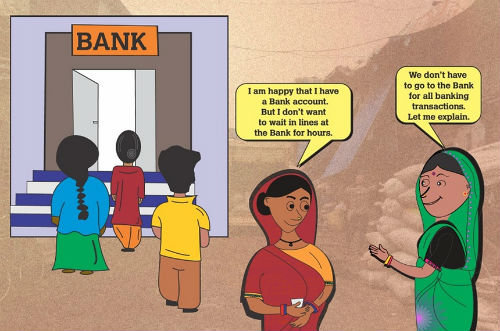Branded business content, meaning articles commissioned by a corporation or nonprofit and published with a leading trade magazine or news organization, is a relatively new medium for business reporters — increasingly top publications including the New York Times, the Washington Post and the Guardian boast entire departments devoted just to that medium. Even so, if you produce this type of content, you want to ensure your reader finds your articles genuinely interesting and not just promotional fluff. Five tips from the trenches follow:
Write for the reader, not the brand.
While corporations sponsor branded content, that doesn’t mean you must produce fluff, flimsy news or articles centered entirely on the company commissioning the work. Work with your director to ensure genuine narratives, news and stories exist in each article. For instance, when Visa commissioned the Guardian’s Guardian Labs studio to write on their financial inclusion efforts, we came up with a one-year, 18-article series on the news surrounding the topic. Through articles, photo essays and even infographics, we showed that in spite of heroic efforts from nonprofits and corporations including Visa, the gender gap between male and female access to traditional banking services still persists. We also wrote on interesting trends within that topic including anthropologists’ research showing alternative ways for the un-banked population to save as a two-part series. Branded content can, and should, be interesting.
Maintain the same journalistic standards for branded content that you would for any business publication.
To secure high readers for your pieces, maintain the exact same standards you would for any journalistic publication. Fact-check your work, provide a broad range of sources, and cite reliable and compelling data. For this piece I wrote for Squarespace on CodeCrew, a nonprofit in Memphis, Tennessee, helping to arm young children with the skills to work as computer programmers, I realized the story would become more newsy and compelling if I added data about the lack of skilled professionals available to fill America’s computer programming jobs. These extra steps help ensure others pick up your story and present you to the news group (and paying client) as thorough and reliable.
Look for that narrative thread.
When you’re doing your interviews, avoid closed-ended questions and dig deep. If you’re writing a business profile about a small business, ask the subject about their early childhood, what big business/news stories swirled around them as they grew up, early mentors, any how they overcame any challenges. Provide good tension in your story and an authentic versus glossed-over version of what the person/business encountered.
Understand you might need to work with the client to alter the story.
Many journalists dislike branded content because they realize the client commissioning the work reviews the draft before publication. Many hard-core news reporters feel this step makes for murky and biased reporting, but that’s not been my experience. Even when a client reviews my work for fact-checking purposes, few insert their point of view and ask me to change anything too drastic. Besides, depending on the organization and your contract, the client understands your role is to tell a true and interesting story versus a self-promotional one. You can always argue the other facts: a premium publication must adhere to the same editorial standards whether the story is branded or independent. So if the client wants to insert jargon or other gibberish, say the editor forbids such silliness to ensure readers read the article.
Think multimedia.
When writing and reporting sponsored business stories, think about multimedia elements while building your business story. So, in writing about research out of India showing comic books work as a helpful financial literacy tool to teach women slum workers in Mumbai, I realized the comic books themselves (and the gorgeous illustrations) warranted their own separate story. (My editor agreed and we made my feature a two-part story with a photo gallery.) Often I embed video within my business features and always seek a dominant photo image (carefully seeking permission to use the images and gathering the photographer’s name as well).











